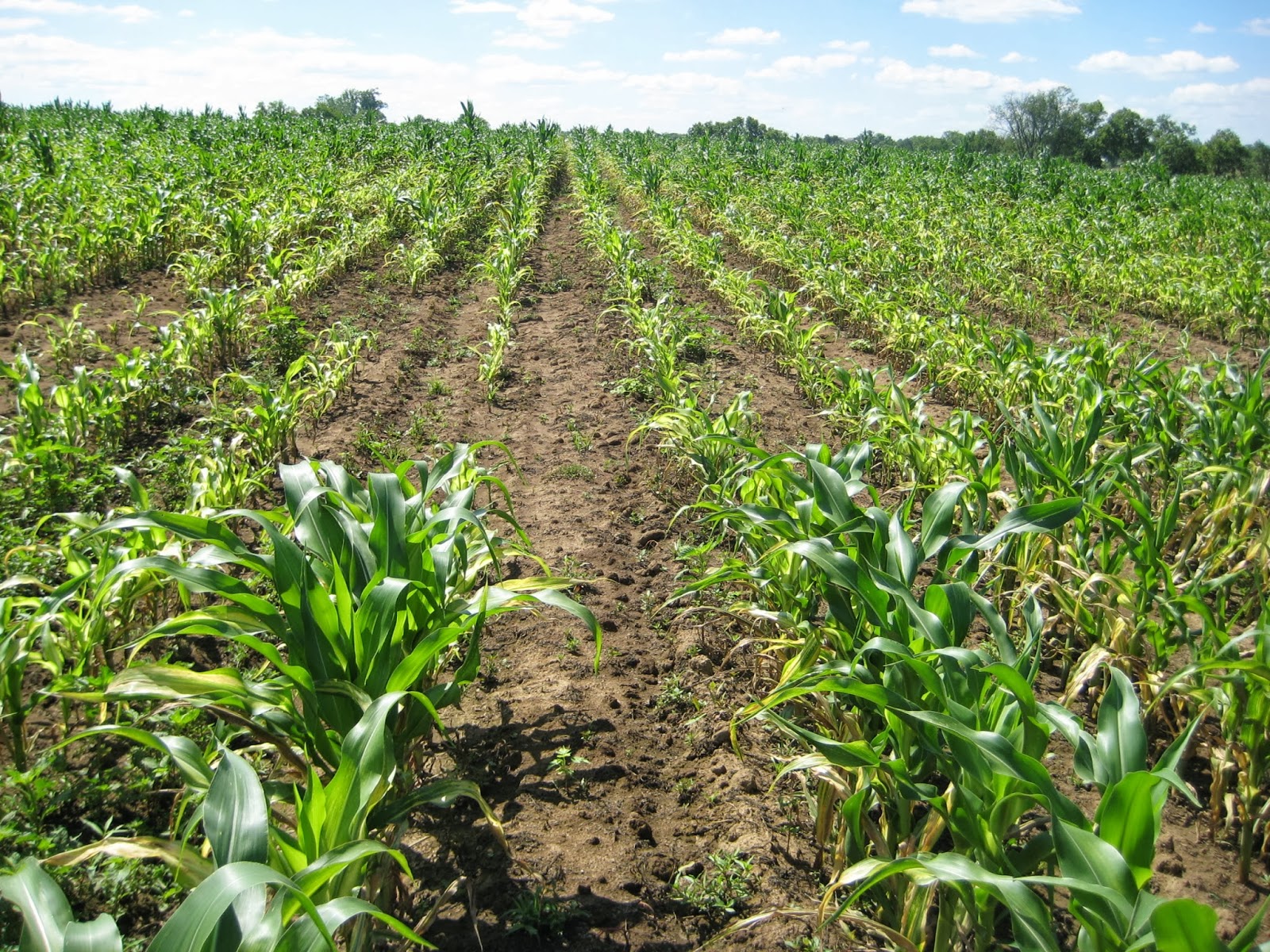Edwin Ritchey, Extension Soils Specialist, University of Kentucky
Lloyd Murdock, emeritus, University of Kentucky

Soil compaction stunted this corn.
Crop yields may be limited by soil compaction. Subsoiling is the most common method used to alleviate soil compaction, but is a time consuming and costly operation. If soil compaction is suspected, it is best to identify the areas in the field where it exists, what depth the compaction begins, and what depth the compaction ceases. The best method to document this information is with a soil penetrometer. Most county Extension offices have penetrometers that may be borrowed to make these measurements.
A soil penetrometer is a tool with a sharpened point that is pushed into the soil profile. The amount of force required to insert the penetrometer into the soil is measured and indicated on the top of the instrument, usually in pounds per square inch (PSI). This measurement of force is referred to as penetrometer resistance or PR. Soil conditions should be moist enough that the force measured is a result of soil compaction, not differences in soil moisture within the soil profile. A good rule of thumb is to make the measurements when the soil is too wet to till. For this reason, it is recommended to test for soil compaction in the winter on unfrozen soil and spring when soil moisture levels are consistently “wet” throughout the soil profile. It is best to work with another person to record the readings and the depths at which the compaction begins and ceases.
Like soil sampling, the best results come from sufficient sampling intensity. A minimum 10 to 20 samples should be taken from small fields. Sample size should increase as field size increases. High traffic areas within a field such as field entrances, “lanes” where grain carts operate, and end rows should be sampled separately. Penetrometer resistance values below 300 psi are most likely not limiting yield. If 50% or more of the samples are greater than 300 psi, then corrective action is expected to provide yield increases that result in an economic return above the cost of subsoiling.
Source : graincrops.uky.edu